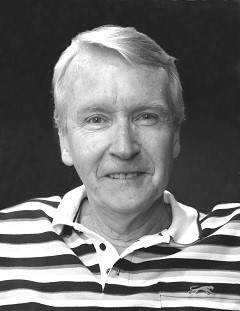From the earliest days of cinema until just after World War 2, travelling picture show people brought entertainment to many an isolated Australian Country area. Often running their show six nights a week in a succession if towns, the picture showman (an occasionally a show-woman) delivered escapism, news, education and a vital sense of connection to the outside world. Daryl Binning, with Nitrate Nomads, has told the stories of many of these showmen and has focused in particular on the life career of the initially itinerant, eventually fixed-location film showman Allan Jones (1902-1982).
For six decades Jones filled the need for entertainment in an almost 24,000 square kilometre region of the South-West of Western Australia. Starting in 1923 with screenings in a hired hall at Deanmill, he gradually expanded activities until by the 1950's he had four picture shows touring the region and had permanent hard-top cinemas in Pemberton, Busselton and Manjimup. In the 1960's and 70's Jones ran four drive-in theatres, and from 1974 to his death he also ran a cinema museum in Busselton.
Following several decades of research into the careers of Allan Jones and other picture showmen of the South-West, Daryl Binning had crafted a compelling account of what it took to set up and operate shows in the region in an age before television decimated touring and fixed-venue cinemas. As well as capturing Allan Jones' ambition, keen business sense and adaptability, the book vividly charts the technology, showmanship, travel routines, obstacles (including floods, fires, uncertain roads and power supplies), and the changes that can make a small-town population expand or contract, sometimes overnight.
Nitrate Nomads is an important contribution to Australian film history not only for telling the story of Allan Jones and other showmen in the South-West, but also for setting that story in a regional, national and international context.
Along the way, Daryl's book charts how the South-West and its people changed, from an early 1900s scattered population of timber-getters and their families working and living in remote hardwood forests, to a 21st century influx of tourists and new residents seeking an alternative to city living.
The book additionally describes how between the silent era of the 1920s and the widescreen, multi-channel sound era of the 1970s, Jones' and his peers picture shows were tailored to the character of each town in which they had a permanent cinema, or to which they visited with their support staff, mobile projection plant and an ever-changing, highly valued stock of films.
Graham Shirley

Graham Shirley has worked as a director, writer and researcher on Australia historical documentaries. He has written for various publications, conducted numerous oral histories and is co-author of Australian Cinema: The First 80 Years (Currency Press, 1983 & 1989).
From 2006 to 2014 he worked for the National Film and Sound Archive of Australia, initially as a senior curator and subsequently as NFSA Historian. In mid-2014 he returned to freelance researching, writing and consulting. He is a member of the Professional Historians Association (NSW & ACT), the Australia Media Oral History Group, and the Royal Australian Historical Society, of which he is also a councillor.
